 |
Shane Ardo The central theme of the Ardo Group’s research program is to understand and control photoinduced reaction mechanisms at interfaces, with the goal of maximizing energy-conversion efficiency for realistic applications. The Ardo Group will design and control interfacial asymmetry through synthesis, engineering, and modeling of the molecule–material structures for solar energy conversion. The photoelectrochemical and photophysical properties of hard and soft material interfaces will be manipulated via molecular functionalization, electrostatic engineering, and physical protection. The results of each study will be pertinent to fundamental electrochemistry and charge-, energy-, and ion-transfer phenomena. |
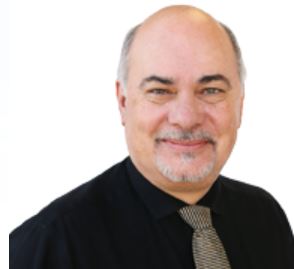 |
Plamen Atanassov Electrocatalysis and electrocatalysts for energy conversion processes; bio-electrocatalysis and energy harvesting systems |
 |
Donald Blake Atmospheric composition is changing at an unprecedented rate. Our research group identifies and quantifies atmospheric gases at (a) remote locations throughout the Pacific region from Alaska to New Zealand, (b) highly polluted cities throughout the world; and (c) areas with special conditions, such as burning forests and/or agricultural wastes. Gas chromatography utilizing flame ionization detection, electron capture detection, and mass spectrometry is our main analytical tool. |
 |
Suzanne A. Blum Research in the Blum Group focuses on the development of new catalysts and metal-mediated reactions with applications in organic synthesis. We are also developing single-molecule techniques to image catalytic reactions at individual transition metal centers. These single-molecule techniques are part of a big-picture, ground-breaking project to change the way chemists think about studying chemical reaction mechanisms: by actually watching reactions live, one molecule at a time. |
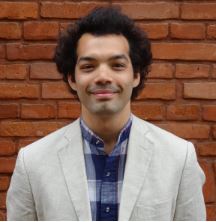 |
William Bowman The Bowman Lab aims to realize advanced electroceramics using novel multiscale correlated characterization. We work at the nexus of fundamental and applied ceramic science, and advanced transmission electron microscopy (TEM) to advance fundamental understanding of the atomic-scale interplay between electrical, chemical, and mechanical properties of oxide ion-conductors and electrocatalysts. Central to our work is developing novel correlated multiscale TEM methods and employing them in concert with macroscale electrochemical testing to steer improved material design and performance for next-generation devices. |
 |
Kieron Burke We are a small interdisciplinary group of research chemists and physicists, dedicated to spreading the use of density functional theory (DFT) throughout the known universe, but particularly in chemistry, physics, materials science, and nanoscience. We mostly develop methodology, but also collaborate with excellent groups both within and beyond UCI on novel applications. Some recent and ongoing projects include electron-molecule scattering using time-dependent density functional theory, atoms and molecules in strong laser fields, and transport through single organic molecules. |
 |
Ty Christoff-Tempesta The Christoff-Tempesta lab specializes in molecular design to engineer hierarchical properties in soft matter systems. To accomplish this, we use tools and principles from organic chemistry, molecular self-assembly, and polymer science to synthesize new molecules and link them together in new or unusual ways. Our research goals include designing holistically circular polymeric materials, understanding the relationships between nanoscale dynamics and macroscopic properties, and scaling the organization of nanopatterned systems. Ultimately, our group seeks to make fundamental advancements in soft matter science to address generational challenges in sustainability and beyond. |
 |
Michael Dennin We study systems that are driven out of equilibrium. Some of the questions focused on in his lab include: how do domains of patterns, such as stripes, evolve in time after a sudden change of an external driving force? Can we use fluctuations in probe particles to understand the response of biologically relevant networks to external stresses? More recently, our lab has begun projects in biological physics that consider the interaction between proteins and monolayers. |
 |
Sarah Finkeldei Our experimental research takes place at the interface between materials chemistry and nuclear chemistry to fabricate advanced nuclear fuel candidates, as well as potential nuclear waste forms. Developing tailored fabrication methods is our starting point and goes hand-in-hand with subsequent exploration of suitable applications and properties for a new material. |
 |
Filipp Furche The goal of research in my group is to develop new electronic structure methods and to apply them to chemistry. We are specifically interested in methods showing promise for excited states and nanoscale systems. Often, our methods allow applications to systems or properties that were not accessible before. Systems studied by us include fullerenes, structures, and properties of gold clusters, and cephams. |
 |
Nien-Hui Ge We are interested in gaining fundamental understanding of physical and chemical processes occurring in photocatalytic materials and at electrified interfaces, which are important for solar water splitting, battery, and energy storage. We are using scattering scanning near-field optical microscopy, second harmonic and sum frequency generation spectroscopy, and two-dimensional infrared spectroscopy to probe charge carrier dynamics, ion transfer, and local structure fluctuations in a wide range of materials. |
 |
Kai He Our research goal is to leverage the advanced electron microscopy tools to understand fundamental materials behavior at the atomic level and engineer novel materials with improved properties for real-world applications in nanoscience and nanotechnology, quantum information sciences, and clean energy technologies. |
 |
Matt Law Nanomaterials offer great potential to deliver breakthroughs in the efficiency, cost and scalability of devices that produce electricity or fuels from sunlight. Our laboratory develops solar energy conversion and storage devices built from 0D, 1D and 2D nanoscale materials, integrating materials synthesis and fundamental opto-electronic characterization with device fabrication, testing, modeling and optimization. |
 |
Elizabeth Lee My research aims to bring fundamental understanding of how the dynamical arrangement of atoms and their electronic structure impact the material-wide properties during their synthesis, processing, and device operating conditions. My group’s research activities include quantum defects in semiconductors, solid-state interfaces for energy applications, and methodological developments for materials simulations. |
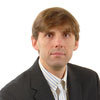 |
Sergey Nizkorodov We are interested in the mechanisms of photochemical interactions between the solar radiation and atmospheric aerosol particles. Can aerosol particles serve as efficient catalysts of photochemical processes? What sort of chemistry happens inside these particles as they drift through the atmosphere exposed to solar radiation? Can photochemical reactions on particle surfaces make the particles more toxic? In our laboratory, we try to find answers to these intriguing problems using modern analytical techniques based on laser spectroscopy, chromatography, and mass- spectrometry. |
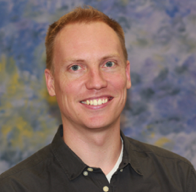 |
Matthew Sheldon The Sheldon laboratory studies fundamental questions about optical energy conversion relating to plasmonic and inorganic nanoscale materials. Experiments are principally designed to identify and optimize unique nanoscale phenomena that are useful for solar energy, as well as related opportunities at the intersection of nanophotonics and chemistry, for broad application beyond the scope of solar energy. Current research activities explore how nanofabricated materials can provide systematic control over the thermodynamic parameters governing optical power conversion. By controllably shaping, confining, and interconverting the energy and entropy of a radiation field, several different classes of light-powered heat engines become possible. |
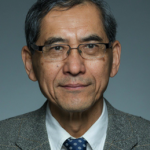 |
Toshiki Tajima Our Group is engaged in the laser wakefield accelerators (LWFA). This may be miniature-sized so that it can be applied to radiotherapy of cancer and cardiology. In addition, our Group is engaged in aneutronic (neutronless) fusion reactions and their applications to fusion reactors. |
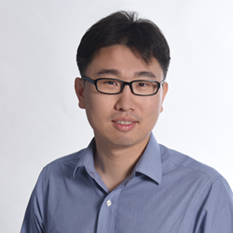 |
Huolin Xin Prof. Xin’s primary field of expertise lies in developing novel 3-D, atomic-resolution, and in situ spectroscopic and imaging tools to probe the structural, chemical, and bonding changes of energy materials during chemical reactions or under external stimuli. His research spans the areas from tomographic and atomic-resolution chemical imaging of battery and fuel cell materials to in situ environmental study of heterogeneous catalysts, and to the development of deep learning enabled self-driving TEM. |
 |
Iryna Zenyuk we work on understanding fundamentals in electrochemical energy conversion and storage technologies, such as fuel cells, batteries and electrolyzers. |
- YouTube
- Google+
ChaMP Graduate Program
4129 Reines Hall
UC Irvine
Irvine, CA 92697
4129 Reines Hall
UC Irvine
Irvine, CA 92697
